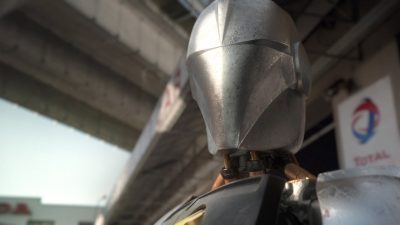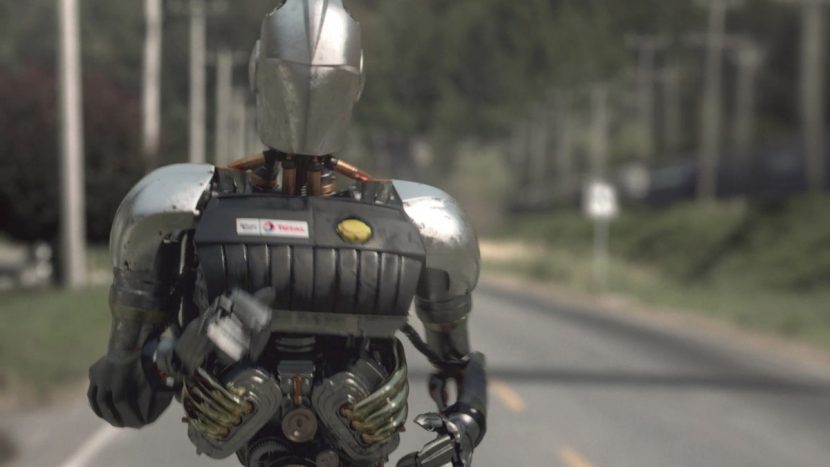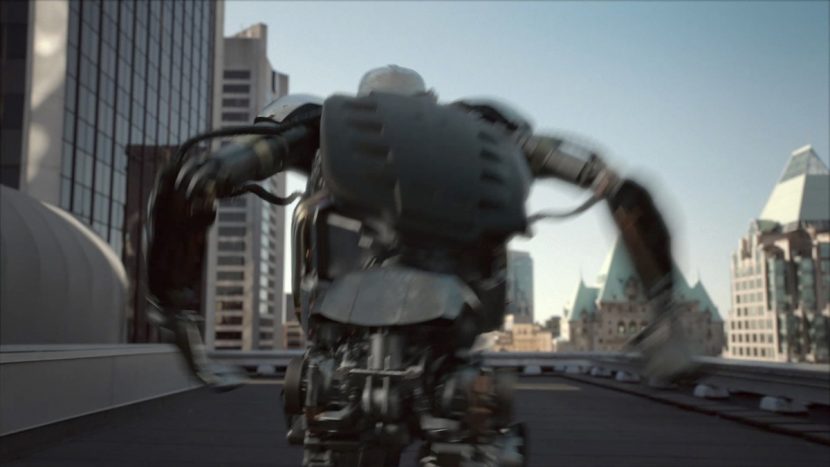In this new spot for lubricant Total Quartz, Mikros Image animated a shape-shifting robot making its way through natural and urban environments. We asked CG supervisor Antoine Carlon and senior compositing artist Julien Dias how the visual effects were achieved.
fxg: Can you talk about how the spot was planned or previs’d? What kind of storyboards and design work for the robot was carried out?
Antoine Carlon, CG Supervisor: The general look/model of the robot was handed out to us by the production. We pushed further the development of some body parts for closeup shots. Based on the storyboard, we started the project working on the look dev and generic animation loops.
fxg: How did you design the robot’s transformation from engine to human form?
Antoine Carlon: On that point, constraints were pretty strong. We first had to shoot the car empty. Then, we had to fill in the space normally filled by the engine. We had to deconstruct the robot to replace its parts and get them to form a real engine.
See Mikros’ breakdown of the spot.fxg: How were the background plates shot?
Antoine Carlon: We asked production to shoot plates twice (in Vancouver). The first plate was shot with an athlete that had pretty much the same height of the robot. It helped us take references regarding space positions and get timing for editing. The second was a clean plate that we used in the final comp with CG elements.
Julien Dias, senior compositing artist: Plates with the athlete were very useful to get a good reference on black levels. The guy was wearing metallic clothes that created natural reflection caustics that we re-used in compositing to get the interactions between the robot and its environment more credible/realistic.
fxg: How did you approach the animation for the robot ?
Antoine Carlon: The animation of the robot was done with keyframes. We spent one week researching jump and racing references that combined rhythm and energy. These elements were very useful to the four animators who could analyze the different movements to apply them carefully on the robot.
fxg: What lighting and rendering tools did you use? Did you have the benefit of HDRs and reference photography of the environments?
Antoine Carlon: We’ve been using Arnold from SolidAngle for rendering. Arnold has been the default render engine at Mikros image for a while now. It’s a very efficient raytracer that enables us to get a very high lighting quality level and photoreal images.
Concerning HDR environments, we tried to collect the best captures during the shoot of the commercial to recreate an accurate light. The metallic aspect of the character made the light a crucial point in the film.
fxg: There are some really bold environments the robot runs through such as the forest and through the water hydrants. What were some of the specific matchmoving and roto challenges for these shots?
Julien Dias: For forest shots, we used Nuke’s particles and stockshots to add dust particles. We used a “position pass” to place the particle emitters and stockshots in a 3d environment in Nuke.
For water interactions, we imported an animated model of the robot in Nuke using the Alembic cache format. That model was used as a particle emitter for the moments the robot was in contact with the water (ground and jet).
Credits
Client: TOTAL
Agency (CP/AD/CD): CLM BBDO
Production: Wanda
Director: Markus Walter
Editor: Yann Malcor
Post-Producer: Laurent Seigneur
 Mikros Image
Mikros Image
Vfx Producer: Christophe Huchet
Executive VFX Producer: Jean-Lin Roig
Head of Vfx: Laurent Creusot
Vfx Shooting Supervisor: Laurent Creusot, Yvan Galtié
Head of CG commercials: Benoit Holl
Head of 3d Studio, commercials: Julien Meesters
CGI Supervisor: Antoine Carlon
Lead Animation: Mickaël Nauzin
Modelers: Vincent Voegtlin
Animators: Alex Sauthier, Jean Duval, Anne Chatelain
Shading, Texture: Olivier Mitonneau
Lighters: Antoine Carlon
Compositors: Julien Dias
Tracking: Yvan Galtié, Lorenzo Veracini
Flame: Laurent Creusot



Great work , very inspiring to see this ;O)
Pingback: Rendering an engine bot | ila.solomon